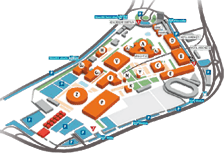Pocket Parks and Public Space Planning after the Covid Pandemic
The URBIS SMART CITY
FAIR conference featured a block
dedicated to the environment with a focus on liveable public spaces. This topic
also includes pocket parks, which were discussed on Wednesday morning by
Miloslav Jurík, Chairman of the Slovak Smart Cities Club.
With the approaching end of the pandemic, people are placing increasing emphasis on a healthy lifestyle and also enough green in their areas. Everything is aimed at changing priorities in terms of planning public space – more bike paths, more parks and public green; it is assumed that less space will be dedicated to individual car transport. The concept of a so-called 15-minute city is also being developed – all services should be accessible on foot or by bike within 15 minutes. This applies to housing, travel to work, shopping, education and health, as well as culture and leisure. The number of cyclists is increasing – the world's major cities have so far built 650 kilometres of bike paths.
Pocket parks are also a theme – unused space with the possibility of use for a smaller park, between buildings, or between parking lots. These spaces can be used for community gardens, exercise, fitness, playground and mobile greenery around containers. Additional low-cost options are being sought to revitalize public space. Once the pandemic is over, there will also be a change in people's commute to work and using offices owned by the city. These spaces can start to be used in various ways – for cultural events, on weekends, with the use and help of local communities.






